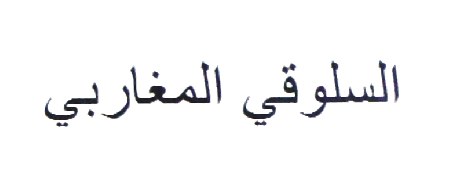

| History
What is behind
a word?
Sloughi versus Saluki  Sloughi/saluki (right) of the Maghreb (left) in Arabic Sloughi/slughi/slougui = colloquial Arabic , saluki= written Arabic Both words are
transliterations
in the western alphabet of one word in Arabic alphabet. There is also the
redundant
transliteration "Saluqi" in the English speaking countries.
According to Lady Amherst in 1907 (4), there were various breeds named Slughi in the Arabic language
Slughi of the
Sahara:
is the breed named "Sloughi" in
the
Western World.
Slughi shami,
yamani,
omani or nedji: are the breed named "Saluki" in
the Western World. The picture above
shows a
"Persian Sighthound" from Iran, as it was named at the time.
According to
Lady Amherst
a hundred years ago (4), these varieties could be told apart by native
experts. The word slughi
is also used
to name Sighthound breeds outside of Africa and the Middle East.
Just like the words Sighthound, Windhund, Galgo, Lévrier, Chart, Agar, Tazi, the word Slughi/Saluki represents a group of different breeds and not a unique breed. In fact, it is like the word "greyhound" in English which can be a type of dog or a specific breed. Like in the European languages, an adjective added to the word specifies which Sighthound breed is meant. The Reality: “….It should be the object of all those who import the Greyhounds of the East, and breed them in this country, to try to keep distinct the different varieties, which in many cases have been so carefully preserved in their own lands. The historic interest attached to each breed is alone a sufficient inducement to do so.” Florence Amherst (4), 1907, United Kingdom. “...
a Saudi Prince was given while hunting last year in Tunisia a local
hound,
which I imagine Dr. Crapon de Caprona would call a Sloughi. The dog was
brought back to Saudi Arabia, since it was a gift, but it was never
used
as it was not regarded a Saluqi Asil but Khariji (foreign)”.
Carl and Kate Rodarty in a personal communication also related a similar reaction by a Sloughi breeder of the Sian Tribe in Libya, from whom they had gotten their first Sloughi Tagiurie el Sian, who upon his first encounter with the Rodartys' feathered Salukis said they were mongrels. The
Myth: "These
hounds are all interbred indiscriminately as far as shape and pelage
are
concerned, because the breeders are breeding for performance, not for
appearance” (contradicting
own
statement
above) References
1.
Dominique Crapon de Caprona (1997): "Salukis, Saluqis, Tazis…and
other Sighthounds, an answer to Sir Terence Clark", in Sighthound
Review,
ed. Bo Bengtson, issue Number 4 1997, Santa Barbara, CA, USA.
2. Dominique Crapon de Caprona (1998): "The Linguistic, Logical and Biological Flaws of the Saluqi Story", in Sighthound Review, ed. Jim Gaidos, November-December issue 1998, Manhattan, KS, USA. On the Sloughiman website 3a. Elias' Modern Dictionary (1981), 24th edition, Elias' Modern Publishing House & Co., Cairo, Egypt. 3b. Arabeyes-QaMoose dictionary English Arabic on line. Try translating "greyhound" into Arabic and compare with the word on the right of the Arabic expression at the top of this page. 4. Florence Amherst (1907): "Oriental Greyhounds" in the Cassell's New Book of the Dog, Vol.IV, Chapter LVI, Robert Leighton, London,UK. 5. Haan Jungeling: "Salukis oder Gazelle Hounds", page 538, in "Das Grosse Windhundeerbe" (1931-1932) Originalgetreues Reprint 1985, Kynos Verlag, Mürlenbach/Eifel, Germany. 6. Henry de Bylandt (1904): “Les Races de Chiens”, Æ. E. Kluwer, Deventer, The Netherlands. 7. Hope & David Waters (1969): "The Saluki in History, Art and Sport", David & Charles, Newton Abbot, UK. |